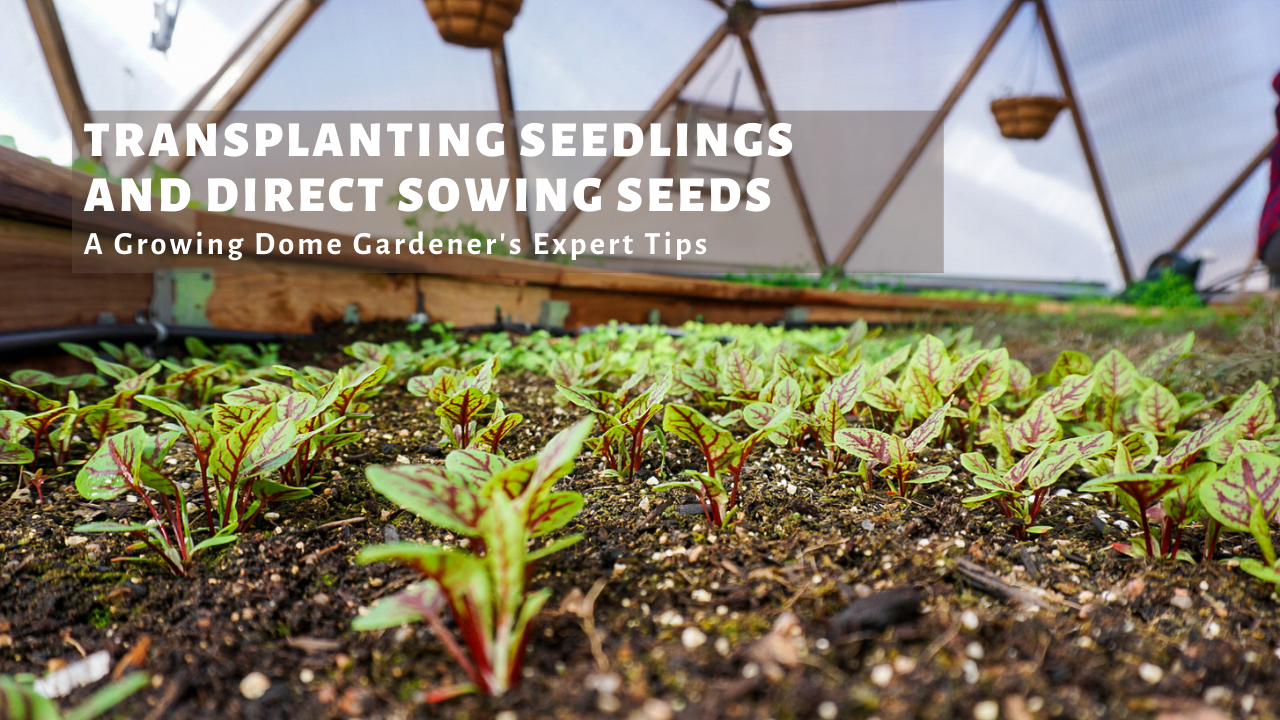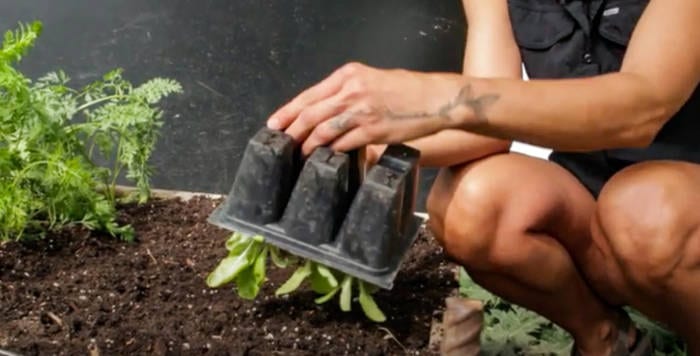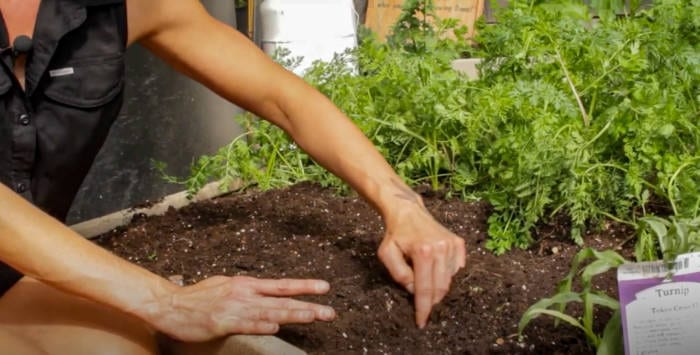
Transplanting seedlings and direct sowing are the two main methods of introducing plants to your small garden. Transplanting is the process of planting a baby plant, or starts, into your garden. In comparison, direct sowing is the process of planting seeds in your garden.
Tips for Transplanting Seedlings
Transplanting is useful for all leaf vegetables and many fruits and flowers, but not all. Transplanting properly is essential for a healthy garden. Here are some ways I prevent transplant shock and ensure fast healthy growth and a thriving greenhouse dome year-round.

1. Prepare the soil by amending as needed and loosening about 6 inches deep or more.
2. Whether you started your seedlings indoors or purchased them from a local store, it is important to ensure your starts are the optimal size. You are looking for true leaves and that they are not root-bound.
If there are many dangling root tendrils, you risk breaking them when you remove the plant from its cell. If roots are broken, the plant can get stressed, making it more susceptible to early flowering (going to seed). They are also more susceptible to pests and diseases.
3. Try not to damage root systems in any way when removing them from their cell. Be careful not to disturb them and keep the root ball intact. This can involve some gentle tapping and a little push at the base.
4. Hold starts near your garden bed in case some unexpected plants from other cells fall out.
5. Too much light can damage starts, especially UV light. Try to prevent light exposure on roots by planting early or late in the day, blocking the sun with your body or shade cloth, or just working quickly with one plant at a time. If in a Growing Dome greenhouse, the polycarbonate panels will block UV light.
6. Hold the bottom of the start so the root ball doesn’t collapse, and gently place into the soil. Ensure proper spacing, and fill in the soil around the edge so you don’t damage the roots.
7. Water in all newly planted starts well.
For more information on transplanting vegetables, please refer to our article How to Start and Transplant Vegetables.
Tips for Direct Sowing
Direct sowing is especially useful for root vegetables like squash, beans, melons and cucumbers, peas, and corn. Their roots are more susceptible to damage and stress when transplanting.

1. Amend and prepare the soil by loosening the same as with transplanting, about 6 inches deep or more.
2. Rows are easier to thin and maintain, so draw out rows in soil with proper distance for whatever you are planting. For example, rows can be 3 inches apart for radishes and at least 6 inches for beets.
3. If you are planting root vegetable seeds, trenching can help you mound them later. Mounding root vegetables can help you get bigger, sweeter roots. Sun exposure on roots contributes to bitterness.
4. If your seed packets are fresh, then don’t waste them by over-seeding. It just makes for more work when thinning after they sprout. If seeds are old, seed heavy as germination rates decrease with time.
5. Blanket seeds with a good, fluffy potting soil. Just a sprinkle for tiny seeds and more for larger seeds.
6. Make sure soil stays moist until after seeds sprout and get true leaves.
7. To achieve optimal soil temps for germination, you can use a tarp, start dome, plastic sheet, blanket, or another method for a couple of days after planting seeds. I have used black plastic in the colder months with success. This method is an art that, if done carefully, can increase germination rates and expedite sprouting while also saving you the energy of constant watering until sprouts pop.

If you are in the process of sowing your winter crops please refer to Sowing Winter Crops in the Growing Dome for more information.
Written By: Heather Gray
I am a gardener and educator here at Growing Spaces. I have farmed and gardened for 27 years in clay, loam, and sand in many different environments. I’m certified in Permaculture design and have taught college courses in agroecology. My focus is on Organic, Holistic, Sustainability.
Join the Inner Circle
An exclusive place for year-round gardeners. Join us to receive our monthly newsletter, “The Happy Grower”. In our newsletter we provide community stories, event updates, expert gardening tips, and exclusive offers.

1 Comment
Thanks for these tips! I’ve been wanting to grow some root crops for the upcoming season! :)